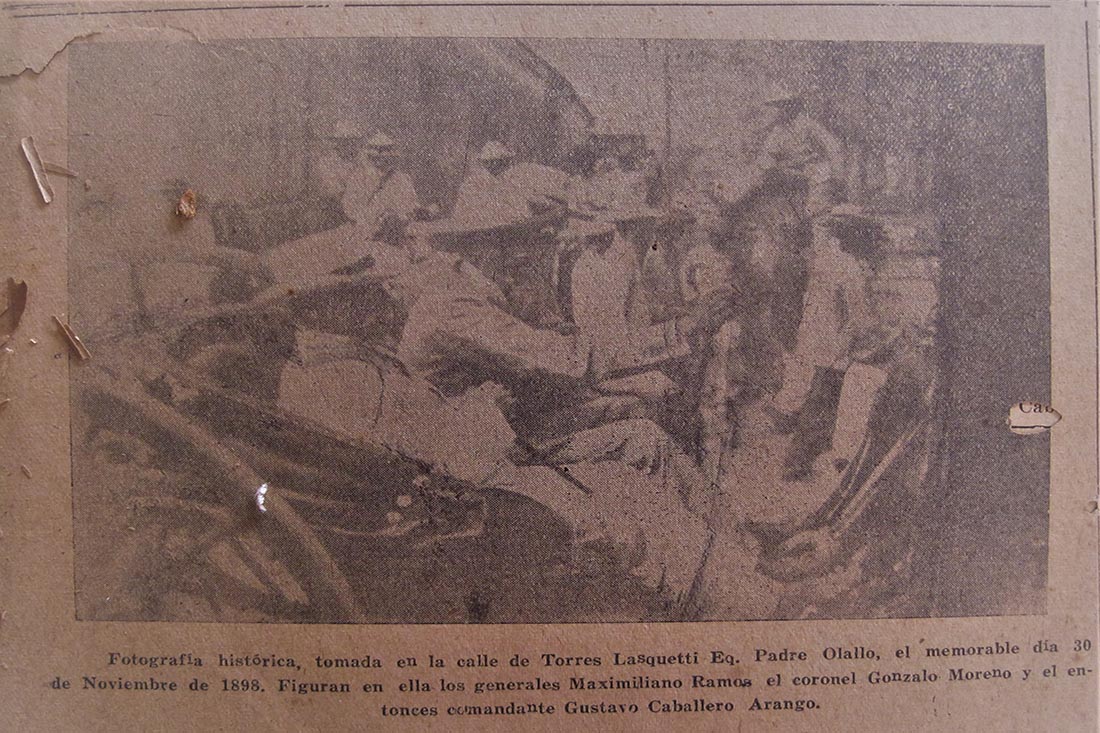The year 1898 is intense in mixed events. On February 15th, the US ship the Maine exploded, a matter that promoted authorization and powers to adopt measures to allow “the complete and definitive end of hostilities between the government of Spain and the Cuban people.” Which was needed by the naval and military forces of the country. The United States intervened in April and ended the war in August with a ceasefire without the presence of the Cuban forces.
Right afterwards, the North American authorities prohibited the Liberation Army from entering the cities that the Spanish had just surrendered and in some places left Spanish officers in positions of power. In the same way, the North American Executive provided food rations to the Iberian combatants, while the Cubans continued to be left high and dry, in increasingly difficult circumstances.
Certainly, an unfinished Revolution
In October 1898 to give continuity to what was agreed in the Constitution of the Yaya, the civil component of the Revolution called an Assembly known as the Assembly of Santa Cruz del Sur. This assembly replaced the Governing Council and its primary objective was to defend absolute independence from what was already on the horizon.
In this national context, on November 30th, 1898, Major General Lope Recio Loynaz with part of the Third Corps forces entered Puerto Príncipe. The press reports that on the morning of that unforgettable day the aforementioned army entered La Caridad, waving their flags, stepping on flowers that fell from the sky and moved by the roar of Puerto Principe.
During the Republic, the people continued to remember and pay tribute to the mambisado survivors who entered La Caridad that day. The Veterans Center was the perfect place to drink from the libertarian springs. The interviews of professionals and others, interested in knowing the History of Cuba, met year after year in that cenacle.
Valuable graphic testimonial
The press in 1927 remembered and made visible the survivors with a snapshot. They stand out in the image: from left to right and standing: Captain Federico Varona (Chirico), Sergeants: Juan Álvarez, Pedro Montalván, Leoncio Bonora, Corporal: Francisco Gómez, Corporal: Pedro Padrón, Sergeant: Manuel Marrero, Alfredo Alberto Morales Casalís, soldier: Manuel Basulto, captain: Federico Cotrina Morales, soldier: Amparo Gómez, Captain: Manuel Padrón, soldier: Américo Silva, Sergeant: Miguel Ángel Boza, 1st Sergeant: Antonio Serrano, Lieutenant: Bartolomé Fernández. Seated: Lieutenant: Emiliano Agüero Varona, Lieutenant Colonel: Manuel Fernández Barroso, Lieutenant Colonel: Francisco Caballero Loynaz, Lieutenant Colonel: Ángel Castillo Quesada, Colonel; Luís Suárez Suárez, Colonel: Juan Manuel Zayas Bazán, Commander: Dr. Francisco Cossío, Lieutenant Colonel: Nicasio Fernández and Captain Porfirio Padilla.
The aforementioned data taken from the press when compared with research of a greater scope of documentary analysis and primary sources allowed the data to be corroborated. Most coincide except for some details in the military ranks.
Transcendence
In the different education levels, from primary school to university, knowledge of the history of the town is part of the comprehensive general culture. Consequently, the sincere tribute to those who stood on the front line challenging the contexts of colonialism in different historical periods is the essence of the face of the Cuban nation.
Bibliography
Rodríguez, Rolando (2007) Cuba; Las máscaras y las sombras. La primera ocupación. Tomo I. Editorial Ciencias Sociales, La Habana, Cuba.
Ferre, Ada: (2011) Cuba insurgente. Raza, nación y revolución 1868-1898. Editorial Ciencias Sociales
La Región newspaper, Camagüey, 1927.
Translated by: Aileen Álvarez García







